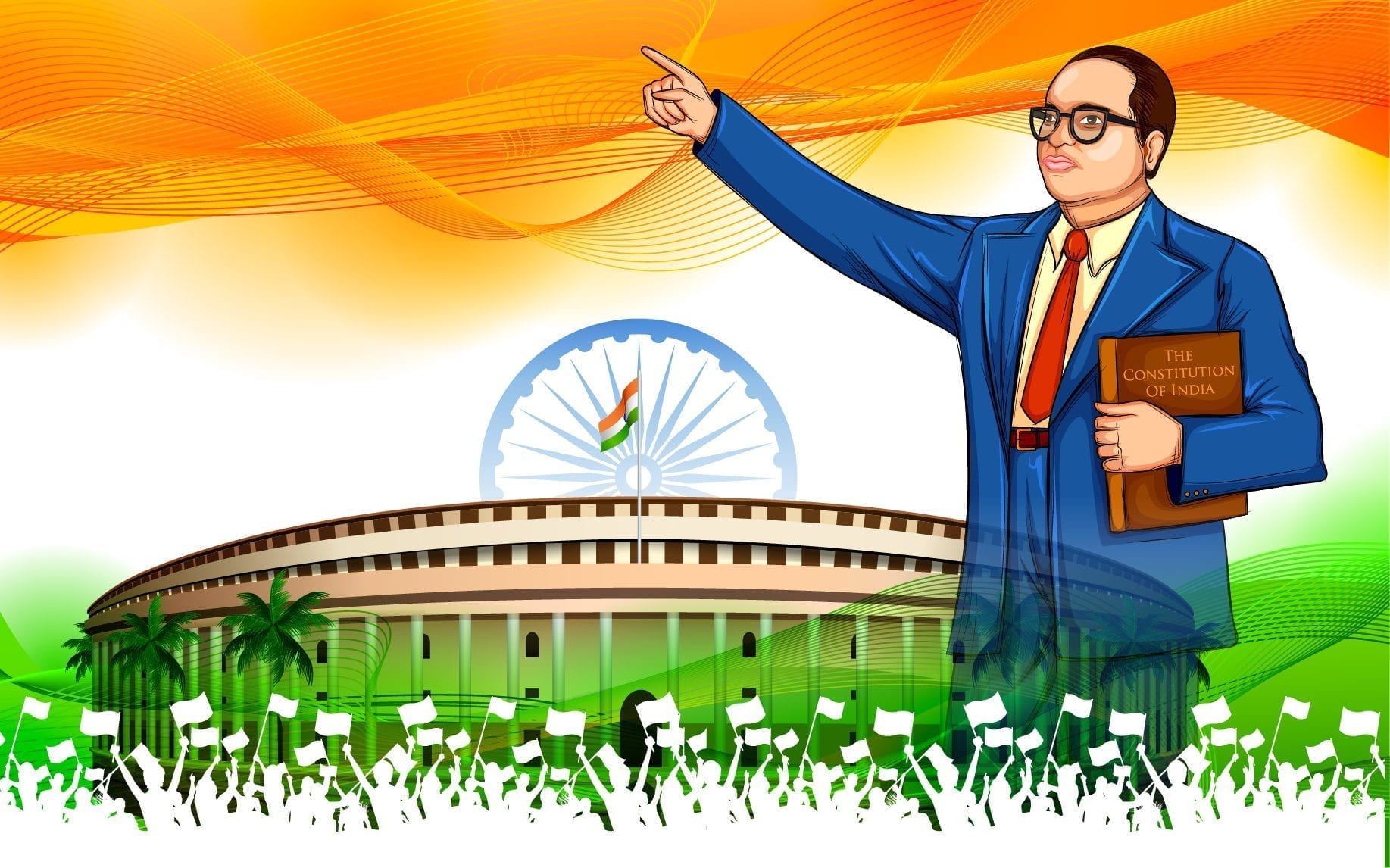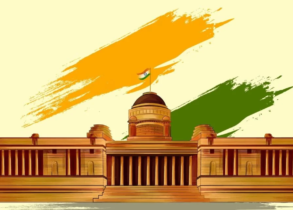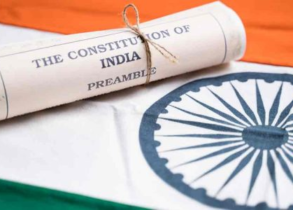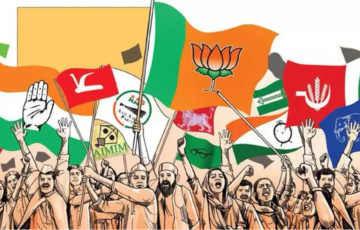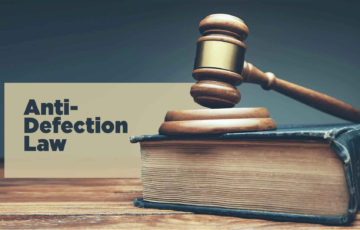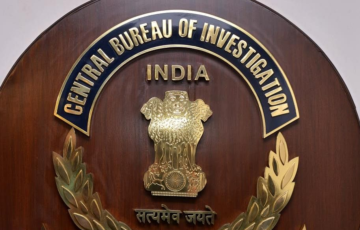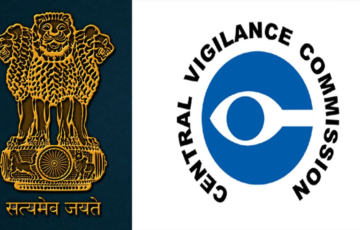MAKING OF CONSTITUTION AND ITS SALIENT FEATURES
Background
- Demand for a Constituent Assembly: The demand for a new constitution for India had been growing throughout the struggle for independence against British colonial rule. This demand was deeply rooted in the decades-long fight for self-rule, led by prominent leaders and freedom fighters like Mahatma Gandhi, Jawaharlal Nehru, and Sardar Patel. These leaders, along with the Indian National Congress and other political parties, recognized that an independent India needed a constitution that would reflect its own values and aspirations rather than being governed by laws imposed by the British. The idea of a Constituent Assembly to draft a constitution for an independent India was proposed by these political entities. It represented the overarching desire for self-governance and the transition from colonial rule to sovereignty. The Constituent Assembly was to serve as the foundation for the democratic, sovereign, and independent India that was envisioned by its people.
- Cabinet Mission: In 1946, amid the evolving landscape of India’s struggle for independence, the British government initiated a pivotal development by dispatching the Cabinet Mission to India. This mission carried the critical mandate of addressing the future constitutional framework of the nation. The mission’s recommendations would have profound implications for India’s political destiny. The Cabinet Mission’s primary suggestion was to advocate for the establishment of a Constituent Assembly. This assembly, they proposed, should be composed of representatives from various communities and provinces within India. The goal was to ensure broad-based participation, reflecting the diverse socio-cultural fabric of the country. The establishment of this Constituent Assembly was a significant step toward shaping the democratic and inclusive character of the future Indian Constitution. It laid the groundwork for the collaborative effort of drafting a constitution that would become a cornerstone of the newly emerging independent India.
Composition of The Constituent Assembly
- Formation of the Constituent Assembly: In November 1946, the Constituent Assembly was formally constituted, following a meticulously designed scheme outlined by the Cabinet Mission Plan. This plan established a framework that sought to ensure equitable representation and participation from various regions and communities within the Indian subcontinent. The features of this scheme were instrumental in shaping the composition and functioning of the Constituent Assembly.
- Allocation of Seats: The plan established that the Constituent Assembly would consist of a total of 389 members, marking a vital step towards drafting an independent Indian constitution. Out of these seats, 296 were allocated to British India, while the remaining 93 were designated for the princely states. Among the 296 seats allocated to British India, 292 members were to be drawn from the eleven governors’ provinces, while the other four would represent the four Chief Commissioners’ provinces, with one member from each.
- Proportional Representation: To ensure proportional representation, each province and princely state (or group of states, in the case of smaller states) were assigned seats based on their respective populations. As a general guideline, approximately one seat was to be allotted for every million inhabitants. This approach aimed to uphold the principles of fairness and inclusivity.
- Representation by Communities: To reflect the diverse demographics of British India, seats allocated to each province were further divided among the three principal communities—Muslims, Sikhs, and General (representing all except Muslims and Sikhs). The allotment of seats was to be commensurate with the population of these communities. Representatives of each community were to be elected by members of that community in the provincial legislative assembly, employing the method of proportional representation via the single transferable vote.
- Unique Nature of the Assembly: In contrast, the representatives of the princely states were to be nominated by the heads of these states. The dual nature of the Constituent Assembly, where some members were elected while others were nominated, made it a unique institution, partly chosen by democratic means and partly through princely patronage.
- Elections and Composition: While the elections for the 296 seats allotted to British Indian Provinces took place in July-August 1946, revealing the Indian National Congress winning 208 seats and the Muslim League securing 73 seats, a few seats designated for the princely states remained vacant as the princely states opted not to participate in the Constituent Assembly.
- Diverse and Inclusive Representation: Despite not being directly elected through universal adult franchise, the Constituent Assembly embodied a diverse cross-section of Indian society. It included representatives from various religious, regional, and social backgrounds, encompassing Hindus, Muslims, Sikhs, Parsis, Anglo-Indians, Indian Christians, Scheduled Castes (SCs), Scheduled Tribes (STs), and even women from these sections. Remarkably, it comprised influential figures from India’s political and intellectual landscape, although the notable exception was Mahatma Gandhi. The Constituent Assembly’s rich tapestry of perspectives and backgrounds reflected the inclusive and democratic ideals that underpinned the making of the Indian Constitution.
| The first meeting of the Indian Constituent Assembly took place on December 9, 1946. The Muslim League boycotted the meeting and called for a separate state, Pakistan, resulting in the attendance of only 211 members. Dr. Sachchidananda Sinha, the eldest member, was initially elected as the temporary President of the Assembly, following a French practice. Later, Dr. Rajendra Prasad became the President, and the Assembly also elected two Vice-Presidents, H.C. Mukherjee and V.T. Krishnamachari, giving it a total of two Vice-Presidents. |
Objectives Resolution
- The Objectives Resolution, which later became the Preamble of the Indian Constitution, was moved by Jawaharlal Nehru on December 13, 1946, and adopted by the Constituent Assembly on January 22, 1947. It laid out the fundamental objectives and principles that would guide the framing of the Indian Constitution. The main objectives and principles outlined in the Objectives Resolution included:
- Sovereign Republic: The Resolution emphasized India’s desire to be a sovereign, independent nation, free from foreign domination or interference.
- Democratic Principles: It affirmed the commitment to democratic governance, reflecting the will of the people through elected representatives.
- Justice and Equality: The Resolution aimed to secure social, economic, and political justice for all citizens, irrespective of caste, religion, gender, or economic status. It stressed the importance of equality and the eradication of social and economic inequalities.
- Secularism: The Objectives Resolution advocated for a secular state that would treat all religions equally and not favor any particular religious group.
- Federalism: It recognized the importance of federal principles to accommodate the diversity of India, with a strong emphasis on preserving the unity and integrity of the nation.
- Rule of Law: The Resolution highlighted the significance of the rule of law and adherence to constitutional principles in governing the country.
- Individual and Fundamental Rights: It underlined the protection of fundamental rights and freedoms, ensuring the dignity and liberty of individuals.
- Peaceful International Relations: The Objectives Resolution called for peaceful coexistence and cooperation with other nations, both regionally and globally.
- Welfare of the People: It emphasized the welfare of the people and the promotion of the general well-being of society as a primary objective.
- Cultural and Educational Advancement: The Resolution aimed to promote cultural and educational advancement while respecting the diverse cultural heritage of the country.
- National Integration: It recognized the importance of national integration and unity among the various communities and regions of India.
- Economic Prosperity: The Objectives Resolution sought to achieve economic prosperity and the equitable distribution of wealth and resources.
- Social Justice: It stressed the need to promote social justice, particularly for marginalized and disadvantaged groups, including the Scheduled Castes and Scheduled Tribes.
- The Objectives Resolution was a pivotal document in the constitutional-making process of India, serving as the guiding light for the Constituent Assembly when drafting the Indian Constitution. Many of the principles outlined in the Objectives Resolution later found expression in the Preamble of the Indian Constitution, which encapsulates the core values and objectives of the nation’s governance.
Other Functions Preformed by the Constituent Assembly
- In addition to the monumental task of crafting the Constitution and legislating everyday laws, the Constituent Assembly undertook a series of significant functions that played a pivotal role in shaping India’s identity and governance:
- In May 1949, the Constituent Assembly endorsed India’s membership in the Commonwealth, marking a significant diplomatic and international engagement.
- On July 22, 1947, the Assembly adopted the national flag, symbolizing the unity and aspirations of the newly independent nation.
- A milestone moment occurred on January 24, 1950, when the national anthem was formally adopted, encapsulating the patriotic fervor and spirit of India.
- On the same historic day, January 24, 1950, the national song was also embraced, reflecting the cultural diversity and rich heritage of the nation.
- In a momentous decision, the Constituent Assembly elected Dr. Rajendra Prasad as the inaugural President of India on January 24, 1950, marking the start of the republic’s official journey.
- Over the course of its journey, the Constituent Assembly convened for a total of 11 sessions spanning two years, 11 months, and 18 days. The framers of the Constitution meticulously studied the constitutions of approximately 60 countries, and the Draft Constitution was meticulously considered for 114 days. The overall expenditure incurred in this constitutional endeavor amounted to ₹64 lakhs.
- On January 24, 1950, the Constituent Assembly convened its concluding session. Nevertheless, it seamlessly transitioned into the provisional parliament of India from January 26, 1950, and continued in this capacity until the formation of the new Parliament following the inaugural general elections held in 1951-52. This transitional role marked a crucial period in India’s early years as an independent republic.
Committees of the Constituent Assembly
- The Constituent Assembly of India established several committees to deliberate on various aspects of drafting the Constitution and to make recommendations. Some of the important committees of the Constituent Assembly are:
- Drafting Committee:
- Chairperson: B. R. Ambedkar
- Main Task: Responsible for drafting the Constitution of India.
- Significance: Dr. Ambedkar played a crucial role in shaping the Constitution, earning him the title “Father of the Indian Constitution.”
o Alladi Krishnaswami Ayyar o N. Gopalaswami o K.M. Munshi o Mohammad Saadullah o B.L. Mitter (replaced by N. Madhava Rao later in 1948) o D.P. Khaitan (replaced by T.T. Krishnamachari later in 1948)
|
| Do You Know? |
| The Indian Constitution was drafted with a commitment to creating an inclusive and democratic framework. Dr. B.R. Ambedkar, the chief architect, presented the draft to the Constituent Assembly, and a separate proposal for a constitution for tribal regions was made by Jaipal Singh, an Adivasi leader and Olympic hockey player. Singh’s proposal, known as the “Adivasi Constitution,” aimed to protect and autonomy of tribal communities in India. Dr. Ambedkar, however, argued that having two separate constitutions for tribal regions and the rest of India would lead to division and lack of unity. In a remarkable moment of statesmanship, Dr. Ambedkar persuaded Singh to withdraw his proposal for a separate constitution for tribal areas and include provisions in the main Indian Constitution to protect the rights and interests of tribal communities. As a result, provisions like the Fifth and Sixth Schedules, which provide for the protection of tribal rights and their autonomy within the Indian union were included. This story reflects the democratic and inclusive spirit in which the Indian Constitution was crafted, acknowledging the diverse and pluralistic nature of the country. It also showcases Dr. B.R. Ambedkar’s leadership and vision for a united and just India. |
- Union Constitution Committee:
- Chairperson: Jawaharlal Nehru
- Main Task: To draft the framework for the government of India.
- Significance: Laid the foundation for the structure of the Indian government.
- Advisory Committee on Fundamental Rights, Minorities, and Tribal and Excluded Areas:
- Chairperson: Sardar Vallabhbhai Patel
- Main Task: To provide recommendations on fundamental rights and safeguards for minorities and tribal areas.
- Significance: Played a key role in protecting the rights of vulnerable sections of society.
- Committee on the Status of Women:
- Chairperson: Hansa Mehta
- Main Task: To examine and recommend measures for the empowerment and protection of women’s rights.
- Significance: Made significant contributions to gender equality in the Constitution.
- Committee on Fundamental Rights:
- Chairperson: B. Kripalani
- Main Task: To draft a section of the Constitution dealing with fundamental rights.
- Significance: Ensured the inclusion of essential individual rights and liberties.
- Minorities Sub-Committee:
- Chairperson: C. Mookherjee
- Main Task: To make recommendations regarding the protection of minority interests.
- Significance: Contributed to ensuring minority rights and representation in the Constitution.
- Advisory Committee on the Rules of Procedure:
- Chairperson: Rajendra Prasad
- Main Task: To formulate rules and procedures for the Constituent Assembly.
- Significance: Helped establish the orderly functioning of the Constituent Assembly.
- Drafting Committee on the Powers of the President:
- Chairperson: Alladi Krishnaswamy Ayyar
- Main Task: To outline the powers and functions of the President of India.
- Significance: Defined the role and responsibilities of the President in the new republic.
- Committee on the Preamble:
- Chairperson: R. Rajam
- Main Task: To draft the Preamble to the Constitution.
- Significance: Created the introductory statement encapsulating the guiding principles of the Indian Constitution.
- Committee on Economic Affairs:
- Chairperson: John Mathai
- Main Task: To provide recommendations on economic policies and principles.
- Significance: Contributed to the economic framework of the country.
- These committees played a vital role in shaping the Constitution of India and ensuring that the diverse needs and concerns of the nation were addressed in the foundational document.
Enactment and Enforcement of the Indian constitution
- B.R. Ambedkar introduced the final draft of the Constitution in the Assembly on November 4, 1948, and it was discussed for five days. The second reading, which included clause by clause consideration, saw 7653 amendments proposed and 2473 discussed. The third reading began on November 14, 1949, and Dr. Ambedkar moved a motion to pass the Constitution as settled by the Assembly. The motion was passed on November 26, 1949, with only 284 members present. The Constitution, adopted on that day, contained a Preamble, 395 Articles, and 8 Schedules. Dr. Ambedkar, the then Law Minister, played a prominent role in the Assembly’s discussions and is known as the ‘Father of the Constitution of India’. He is also known as a ‘Modern Manu’, a brilliant writer, constitutional expert, and leader of the Scheduled Castes.
- The Indian Constitution, which covers various aspects such as citizenship, elections, provisional parliament, temporary provisions, and short titles, came into force on November 26, 1949. The remaining provisions came into force on January 26, 1950, which is celebrated as Republic Day. January 26 was chosen for its historical significance, as it was the day Purna Swaraj day was celebrated in 1930. The Indian Independence Act of 1947 and the Government of India Act of 1935 were repealed, but the Abolition of Privy Council Jurisdiction Act (1949) was continued. The date of commencement of the Constitution is considered the ‘date of its commencement’.
| Hindi Text of The Constitution |
| The Constitution of India initially did not provide an authoritative text in Hindi. However, the 58th Constitutional Amendment Act of 1987 made a provision for this by inserting a new Article 394-A in Part XXII. This article stipulates that the President must publish the translation of the Constitution in Hindi, including any necessary modifications to conform to the language, style, and terminology of the authoritative texts of Central Acts in Hindi. The translation must also include all amendments made before publication. The translation of the Constitution and its amendments must have the same meaning as the original English text, and if any difficulties arise, the President must revise the Hindi text accordingly. The translation is considered the authoritative text in Hindi for all purposes. |
Criticism of The Constituent Assembly
- Not a Representative Body: Critics argued that the Constituent Assembly’s members were not directly elected by the Indian populace using universal adult franchise. Instead, members were selected through a complex system of indirect elections. This process, critics contended, did not truly reflect the will of the people.
- Not a Sovereign Body: Detractors maintained that the Constituent Assembly lacked full sovereignty because its establishment was based on proposals from the British Government. The Assembly conducted its sessions with the permission and approval of the British authorities, leading some to question its independence.
- Time Consuming: Critics expressed impatience with the extensive amount of time the Constituent Assembly took to draft the Constitution. They compared this lengthy process unfavorably to the United States, where the framers of the American Constitution completed their work in just four months. The term “Drifting Committee” was coined by Naziruddin Ahmed to convey his discontent with the Assembly’s pace.
- Dominance of Congress: Critics argued that the Constituent Assembly was overwhelmingly dominated by the Indian National Congress. They contended that the Assembly essentially served as a platform for the Congress party’s agenda, raising concerns about the representation of diverse political ideologies and voices.
- Lawyer-Politician Domination: Detractors pointed out that a significant number of members in the Constituent Assembly were lawyers and politicians. They asserted that other segments of society, such as laborers, farmers, and intellectuals from various fields, were not adequately represented. This, critics believed, contributed to the bulkiness and the use of complex language in the Constitution.
- Dominance by Hindus: Some critics argued that the Constituent Assembly was primarily Hindu-dominated, which raised concerns about the representation of religious and cultural diversity. Terms like “a body of Hindus” and the comment that it represented “only one major community in India” highlighted this criticism. The perceived lack of representation for religious minorities was a significant concern.
- These critiques underscore the multifaceted nature of the criticisms directed at the Constituent Assembly. They encompass issues related to representation, sovereignty, efficiency, political domination, and inclusivity in the drafting of the Indian Constitution. It’s important to remember that the Constituent Assembly was composed of diverse members with varying perspectives and faced complex challenges in the process of nation-building.
Important Facts
|
Salient Features of the Constitution
- Lengthiest Written Constitution: The Constitution of India is the world’s longest written constitution, consisting of a Preamble, 470 Articles, and 12 Schedules. It was originally written in 1949 and has undergone numerous amendments since 1951, including deletions and additions. The Constitution’s size is attributed to geographical, historical, and legal factors. Geographical factors include the vastness of the country, historical influences like the Government of India Act of 1935, a single Constitution for both the Centre and states, and the dominance of legal luminaries in the Constituent Assembly. The Constitution includes fundamental governance principles, administrative provisions, and matters left to ordinary legislation or established political conventions in other modern democratic countries.
- Drawn from Various Sources: The Indian Constitution is a result of extensive borrowing from various sources, including other countries’ constitutions and the Government of India Act of 1935. Dr. B.R. Ambedkar proudly noted that it was crafted after examining known global constitutions. The structural aspects of the Constitution heavily draw from the Government of India Act of 1935. The philosophical components, such as Fundamental Rights and Directive Principles, find their inspiration in the American and Irish Constitutions, respectively. The political elements, including the principle of Cabinet Government and the relationship between the Executive and the Legislature, are largely influenced by the British Constitution. Numerous other provisions are adapted from the constitutions of Canada, Australia, Germany, the USSR (now Russia), France, South Africa, Japan, and more. The Government of India Act, 1935, serves as a significant source, contributing to the Federal Scheme, Judiciary, Governors, Emergency Powers, Public Service Commissions, and administrative details. Over half of the Constitution’s provisions closely resemble or are identical to this Act of 1935.
- Rigid and Flexible: The Constitution is rigid in some aspects as it requires a special majority in Parliament and the consent of half of the states to make certain amendments. However, it is flexible in the sense that some amendments can be made with a simple majority in Parliament.
- Federal System with Unitary Bias: India’s Constitution establishes a federal structure of government where powers are divided between the central and state governments. However, during emergencies, the Constitution empowers the central government to assume a more unitary role. For example, Article 356 of the Constitution empowers the President to dismiss a state government and impose President’s Rule if the constitutional machinery in a state breaks down.
- Parliamentary System: The Indian Constitution has chosen the British Parliamentary System of Government over the American Presidential System, which is based on the principle of cooperation and coordination between legislative and executive organs. This system, also known as the ‘Westminster’ Model of Government, is established at the Centre and in states. It features nominal and real executives, majority party rule, collective responsibility of the executive to the legislature, membership of ministers in the legislature, leadership of the Prime Minister or Chief Minister, and dissolution of the lower House. However, the Indian Parliament is not a sovereign body and the State has an elected head, unlike the British State’s hereditary head.
- Fundamental Rights: The Constitution guarantees fundamental rights to every citizen, which includes rights to equality, freedom of speech, and freedom of religion. For example, Article 15 prohibits discrimination on grounds of religion, race, caste, sex, or place of birth.
- Directive Principles of State Policy: The Constitution includes directive principles that provide guidelines to the government for promoting social justice, economic welfare, and the well-being of the people. For example, Article 39 directs the state to ensure that children are given opportunities and facilities to develop in a healthy manner.
- Integrated and Independent Judiciary: The Indian Constitution establishes an integrated and independent judicial system, with the Supreme Court at the top. This system enforces both central and state laws, unlike the US where federal laws are enforced by the federal judiciary and state laws by the state judiciary. The Supreme Court is a federal court, guarantor of citizens’ fundamental rights, and guardian of the Constitution. The Constitution ensures its independence through provisions such as security of tenure, fixed service conditions, and the Consolidated Fund of India. It also prohibits discussions on judges’ conduct in legislatures, prohibits practice after retirement, and separates the judiciary from the executive.
- Fundamental Duties: The original constitution did not include Fundamental Duties, which were added during internal emergencies. These duties include respecting the Constitution, protecting the country’s sovereignty, promoting common brotherhood, and preserving cultural heritage.
- Universal Adult Franchise: India follows the principle of universal adult franchise, which means that every adult citizen has the right to vote. This ensures widespread democratic participation.
- Single Citizenship: India follows the concept of single citizenship, meaning that every citizen of India is a citizen of the country as a whole, and there is no separate state citizenship.
- Emergency Provisions: The Constitution includes provisions for national emergencies (Article 352, 356, and 360) that grant additional powers to the central government during times of crisis. For example, during a state of emergency, the central government can take over the powers of the states.
- Secular State: The Indian Constitution is a secular state, ensuring equal respect for all religions and protecting them equally. It includes provisions for liberty of belief, equal protection of laws, and equal opportunity in public employment. The Constitution also abolishes communal representation, allowing temporary reservation of seats for scheduled castes and tribes to ensure adequate representation.
- Three Tier Government: The Indian Constitution initially had a dual polity with provisions for the organization and powers of the Centre and states. However, the 73rd and 74th Constitutional Amendment Acts (1992) introduced a third-tier of government, local governments, which is not found in any other Constitution. The 73rd Amendment added new Part IX17 and Schedule 11 to the Constitution, while the 74th Amendment added new Part IX-A18 and Schedule 12.
Criticism of the Constitution
A Borrowed Constitution:
- Critics argue that the Indian Constitution is a patchwork of ideas borrowed from different sources, including the Government of India Act, 1935, and various foreign constitutions.
- However, proponents of this borrowing assert that it was a pragmatic approach. India was transitioning from colonial rule to independence, and adopting elements from established constitutions provided a stable foundation. Dr. B.R. Ambedkar, the chief architect of the Constitution, explained that it involved adapting global constitutional concepts to meet India’s specific needs.
A Carbon Copy of the 1935 Act:
- Critics have often compared the Indian Constitution to the Government of India Act, 1935, asserting that it retained many administrative elements.
- On the contrary, Indian leaders and constitutional experts argue that the Constitution was a radical departure from the 1935 Act. While some structural elements may have been retained for practical reasons, it incorporated new provisions, including fundamental rights, which the colonial Act did not have.
Un-Indian or Anti-Indian:
- Critics contend that the Constitution’s foreign influence makes it un-Indian and unsuitable for the country.
- Indian political leaders, like Jawaharlal Nehru, emphasized that the Constitution was a necessary bridge between India’s ancient heritage and modern democracy. It was designed to respect India’s rich diversity while providing a platform for progressive change.
An Un-Gandhian Constitution:
- Critics have argued that the Constitution does not align with Mahatma Gandhi’s vision of a decentralized and village-centric India.
- Political leaders like Sardar Vallabhbhai Patel acknowledged the importance of Gandhi’s ideals but noted that the challenges of governance required a strong central authority. However, provisions for local self-governance and the promotion of village panchayats were included in the Constitution.
Elephantine Size:
- Critics describe the Constitution as excessively detailed and overly complex.
- Rajendra Prasad, India’s first President, acknowledged that the Constitution was comprehensive, emphasizing that the complexity was necessary to accommodate the country’s vast diversity and protect the rights of all citizens.
Paradise of the Lawyers:
- Critics argue that the Constitution’s legal language makes it inaccessible to the general public.
- B.R. Ambedkar responded to this criticism by pointing out that the Constitution was drafted for legal clarity and precision. However, he recognized the need for it to be more accessible to the masses, as evidenced by efforts to translate it into various Indian languages.
- These debates and discussions around the Indian Constitution have played a crucial role in shaping its interpretation and relevance in India’s democratic journey. While criticisms exist, they often do not fully acknowledge the complex and multifaceted nature of the Constitution, which has evolved over time to address India’s changing needs and challenges.
The Constitution of India at a Glance
| Part | Articles | Subject Matter |
| Preamble | – | Introduction and objectives of the Constitution |
| Part I | Articles 1-4 | Territory of India |
| Part II | Articles 5-11 | Citizenship of India |
| Part III | Articles 12-35 | Fundamental Rights |
| Part IV | Articles 36-51 | Directive Principles of State Policy |
| Part IVA | Articles 51A | Fundamental Duties |
| Part V | Articles 52-151 | The Union |
| Part VI | Articles 152-237 | The States |
| Part VII | Articles 238-239AA | Repealed and Special Provisions Relating to Certain States |
| Part VIII | Articles 239AB-241 | Union Territories |
| Part IX | Articles 243-243O | Panchayats |
| Part IXA | Articles 243P-243ZG | Municipalities |
| Part IXB | Articles 243ZH-243ZT | Co-operative Societies |
| Part X | Articles 244-244A | Scheduled and Tribal Areas |
| Part XI | Articles 245-263 | Relations between the Union and States |
| Part XII | Articles 264-300A | Finance, Property, Contracts, and Suits |
| Part XIII | Articles 301-307 | Trade, Commerce, and Intercourse within India |
| Part XIV | Articles 308-323 | Services Under the Union and the States |
| Part XIVA | Articles 323A-323B | Administrative Tribunals |
| Part XV | Articles 324-329 | Elections |
| Part XVI | Articles 330-342 | Special Provisions for Scheduled Castes, Scheduled Tribes, and Anglo-Indians |
| Part XVII | Articles 343-351 | Official Language of the Republic of India |
| Part XVIII | Articles 352-360 | Emergency Provisions |
| Part XIX | Articles 361-367 | Miscellaneous Provisions |
| Part XX | Articles 368-378 | Amendment of the Constitution |
| Part XXI | Articles 379-392 | Temporary, Transitional, and Special Provisions |
| Part XXII | Articles 393-395 | Short Title, Commencement, and Repeals |
Schedules of the Constitution at a Glance
| Schedule | Subject Matter |
| First Schedule | List of States and Union Territories of India with their territories and names |
| Second Schedule | Provisions related to the emoluments, allowances, privileges, etc., of constitutional positions |
| Third Schedule | Oaths and affirmations for the President, Members of Parliament, Ministers, Judges, and officials |
| Fourth Schedule | Allocation of seats in the Rajya Sabha to states and union territories |
| Fifth Schedule | Administration and control of scheduled areas and tribes in states |
| Sixth Schedule | Special provisions for the administration of tribal areas in Assam, Meghalaya, Tripura, and Mizoram |
| Seventh Schedule | Division of legislative powers between the Union and states (Union List, State List, Concurrent List) |
| Eighth Schedule | Official languages of India recognized by the Constitution |
| Ninth Schedule | Laws immune from judicial review on the grounds of violating fundamental rights |
| Tenth Schedule | Anti-Defection Law dealing with disqualification of elected representatives |
| Eleventh Schedule | Powers and responsibilities of Panchayats (local self-governance) in rural areas |
| Twelfth Schedule | Powers and responsibilities of Municipalities (local self-governance) in urban areas |
Sources of the Constitution at a Glance
| Sources | Features Borrowed |
| Government of India Act of 1935 | Federal Scheme, Office of Governor, Judiciary, Public Service Commissions, Emergency provisions, and administrative details. |
| British Constitution | Parliamentary government, Rule of Law, legislative procedure, single citizenship, cabinet system, prerogative writs, parliamentary privileges, and bicameralism. |
| US Constitution | Fundamental rights, independence of judiciary, judicial review, impeachment of the president, removal of Supreme Court and high court judges, and the post of vice-president. |
| Irish Constitution | Directive Principles of State Policy, nomination of members to Rajya Sabha, and the method of election of the president. |
| Canadian Constitution | Federation with a strong Centre, vesting of residuary powers in the Centre, appointment of state governors by the Centre, and advisory jurisdiction of the Supreme Court. |
| Australian Constitution | Concurrent List, freedom of trade, commerce, and inter-course, and joint sitting of the two Houses of Parliament. |
| Weimar Constitution of Germany | Suspension of Fundamental Rights during Emergency. |
| Soviet Constitution (USSR, now Russia) | Fundamental duties and the ideal of justice (social, economic, and political) in the Preamble. |
| French Constitution | Republic and the ideals of liberty, equality, and fraternity in the Preamble. |
| South African Constitution | Procedure for the amendment of the Constitution and the election of members of Rajya Sabha. |
| Japanese Constitution | Procedure established by Law. |
UPSC YEAR MAINS QUESTIONS
1. Consider the following statements in respect of the National Flag of India According to the Flag Code of India, 2002 (2023)
Statement-I: One of the standard sizes the National Flag of India of 600 mm × 400 mm.
Statement-II: The ratio of the length to the height (width) of the Flag shall be 3:2.
Which one of the following is correct in respect of the above statements?
a) Both Statement-I and Statement-II are correct and Statement-II is the correct explanation for Statement-I
b) Both Statement-I and Statement-II are correct and Statement-II is not the correct explanation for Statement-I
c) Statement-I is correct but Statement-II is incorrect
d) Statement-I is incorrect but Statement-II is correct
2. Consider the following statements in respect of the Constitution Day: (2023)
Statement-I: The Constitution Day is celebrated on 26th November every year to promote constitutional values among citizens.
Statement-II: On 26th November, 1949, the Constituent Assembly of India set up a Drafting Committee under the Chairmanship of Dr. B.R. Ambedkar to prepare a Draft Constitution of India.
Which one of the following is correct in respect of the above statements?
(a) Both Statement-I and Statement-II are correct and Statement-II is the correct explanation for Statement-I
(b) Both Statement-I and Statement-II are correct and Statement-II is not the correct explanation for Statement-I
(c) Statement-I is correct but Statement-II is incorrect
(d) Statement-I is incorrect but Statement-II is correct
3. If a particular area is brought under the Fifth Schedule of the Constitution of India, which one of the following statements best reflects the consequence of it? (2022)
1. This would prevent the transfer of land of tribal people to non-tribal people.
2. This would create a local self-governing body in that area.
3. This would convert that area into the Union Territory.
4. The State having such areas would be declared a Special Category State.
4. Right to vote and to be elected in India is a….. (2017)
(a) Fundamental Right
(b) Natural Right
(c) Constitutional Right
(d) Legal Right
5. Under which Schedule of the Constitution of India can the transfer of tribal land to private parties for mining be declared null and void? (2019)
(a) Third Schedule
(b) Fifth Schedule
(c) Ninth Schedule
(d) Twelfth Schedule
6. The Ninth Schedule was introduced in the Constitution of India during the prime ministership of: (2019)
(a) Jawaharlal Nehru
(b) Lal Bahadur Shastri
(c) Indira Gandhi
(d) Morarji Desai
7. Consider the following statements: (2020)
1. The Constitution of India defines its structure in terms of federalism, secularism, fundamental rights and democracy.
2. The Constitution of India provides for ‘Judicial review’ to safeguard the citizens’ liberties and to preserve the ideals on which the Constitution is based.
Which of the statements given above is/are correct?
(a) 1 only
(b) 2 only
(c) Both 1 and 2
(d) Neither 1 nor 2
8. Which one of the following in Indian polity is an essential feature that indicates that it is federal in character? (2021)
1. The independence of the judiciary is safeguarded.
2. The Union Legislature has elected representatives from constituent units.
3. The Union Cabinet can have elected representatives from regional parties.
4. The Fundamental Rights are enforceable by Courts of Law.
9. ‘Constitutional Morality’ is rooted in the Constitution itself and is founded on its essential facets. Explain the doctrine of ‘Constitutional Morality’ with the help of relevant judicial decisions.(2021)

